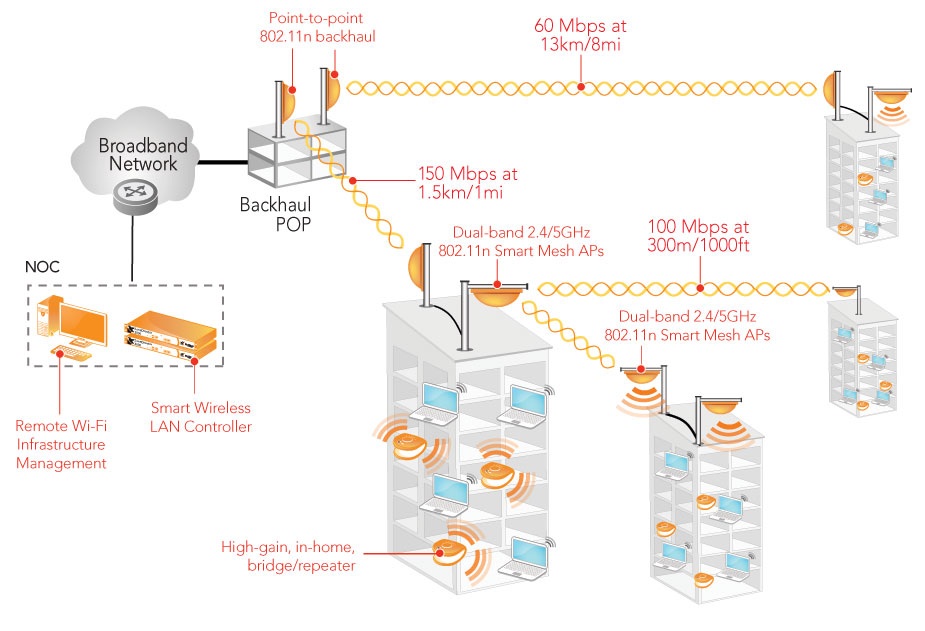Who needs WiMax, LTE? Ruckus Wireless sees opportunities in WiFi

When it comes to wireless broadband, all of the excitement is centered around next generation technologies such as WiMax and LTE. But there are still some who see opportunities in WiFi - well, a smarter WiFi that allows service providers to offer a broadband service that has lower costs of entry and the ability to scale more efficiently.
For the most part, the model - which is being announced today by Silicon Valley's Ruckus Wireless - has its eyes on emerging markets and rural American markets, places where traditional carriers likely won't be targeting anytime soon with advanced 4G technologies.
The thing to remember about wireless broadband is that there has to be wired backhaul system in place somewhere. In some markets, that could be a train station or an airport or government center. But getting that connection to neighborhoods or surrounding areas can be an expensive and slow process. But Ruckus has a system that it says will reduce costs for the provider, who can deliver broadband connections for a fraction of the price in a fraction of the time. The company explains it like this:
...the Ruckus WBA solution uniquely combines 802.11n technology with patented, state-of-the-art intelligent antenna arrays, dynamic beamforming and adaptive smart mesh networking to enable unprecedented range, reliability and capacity within the unlicensed wireless spectrum. This combination delivers service providers a 5x up-front reduction in capital expense for coverage of any given areas and a 30x reduction in the capital cost for additional capacity.
The company's image that explains the technology can be a bit overwhelming when you first check it out - but when you think about a wireless Internet signal of 50-60 megabits shooting a distance of a dozen miles or so - from a train station on one end of town to an apartment building at the other end of town - and then breaking that signal up over an 802.11n connection so it can be dispersed among the customers in that building, then it gets a bit easier to understand.
Wireless mesh networking is not a new idea - there's been talk about doing this sort of thing for years. But even the proposals that involve blanketing a neighborhood or a park can be costly, what with the equipment that's needed to maintain a strong signal. The Ruckus technology, however, delivers that signal to equipment that can then manage it into a strength that meets the needs of the customers.
This isn't the sort of technology we'll be seeing in midtown Manhattan or downtown San Francisco anytime soon. The carriers are always quick to invest in major metropolitan areas. But when the U.S. government talks about innovative ways to bring broadband technology to the rural, largely forgotten areas of the country, I suspect that this is an example of something that could reach the otherwise unreachable - for a lot less of an investment.
